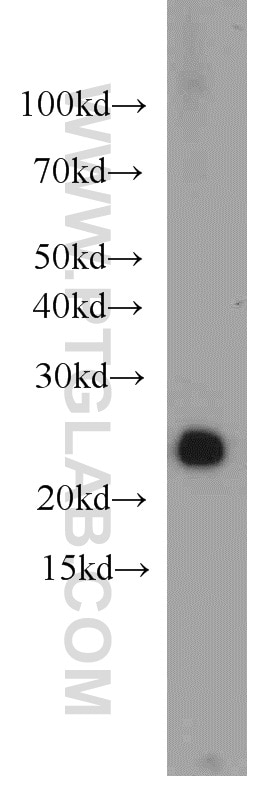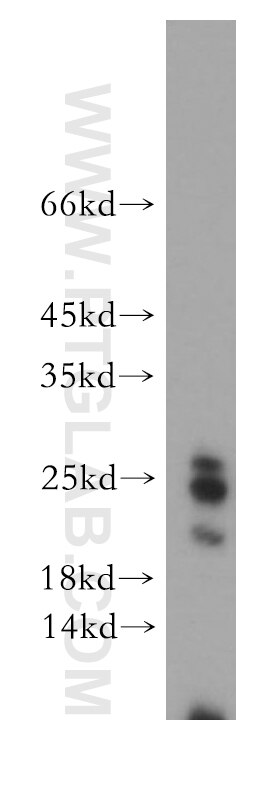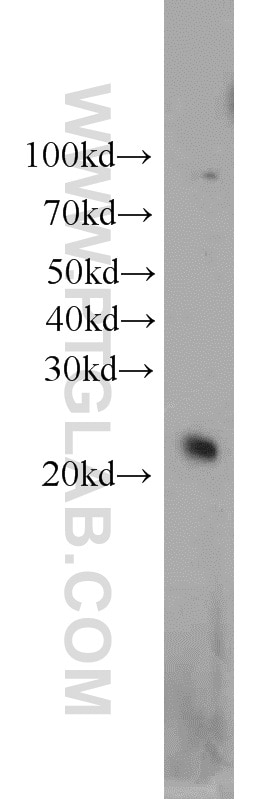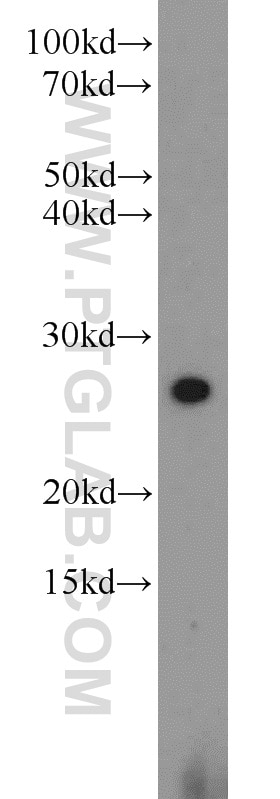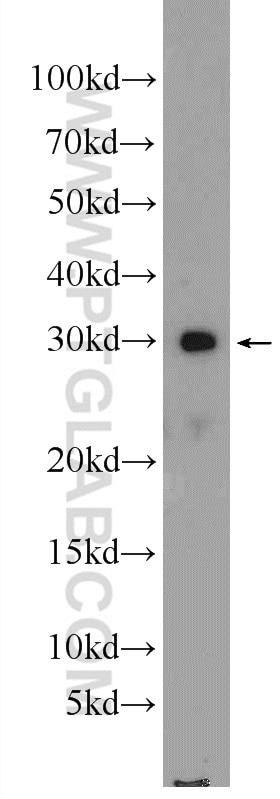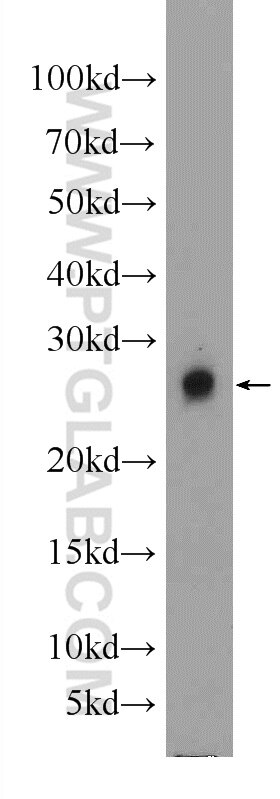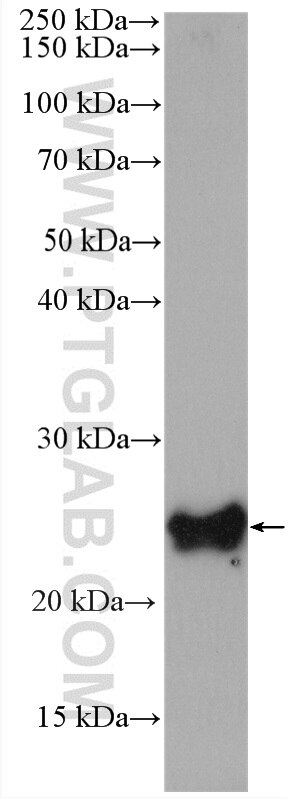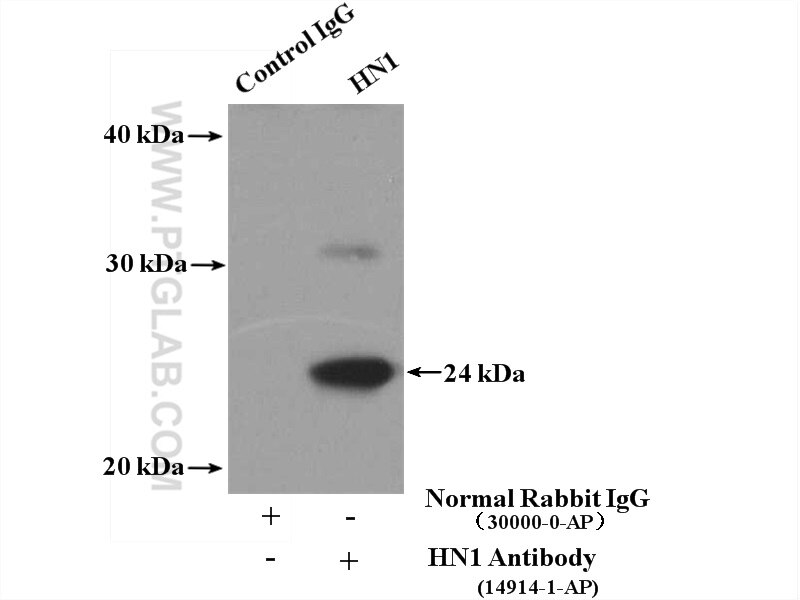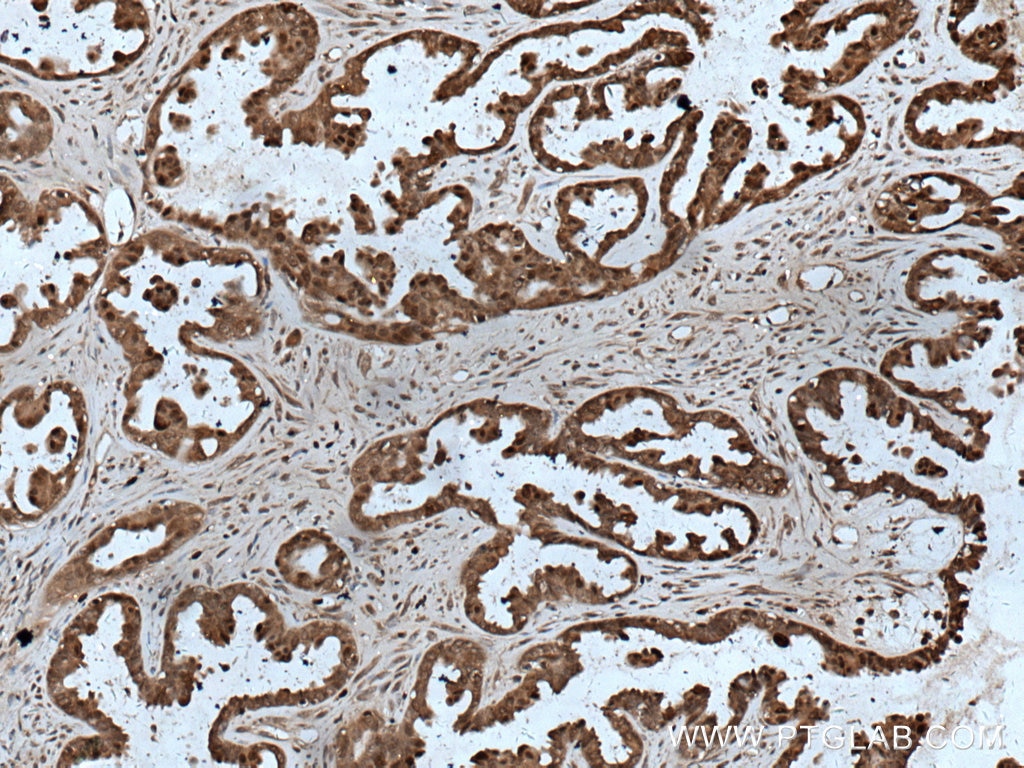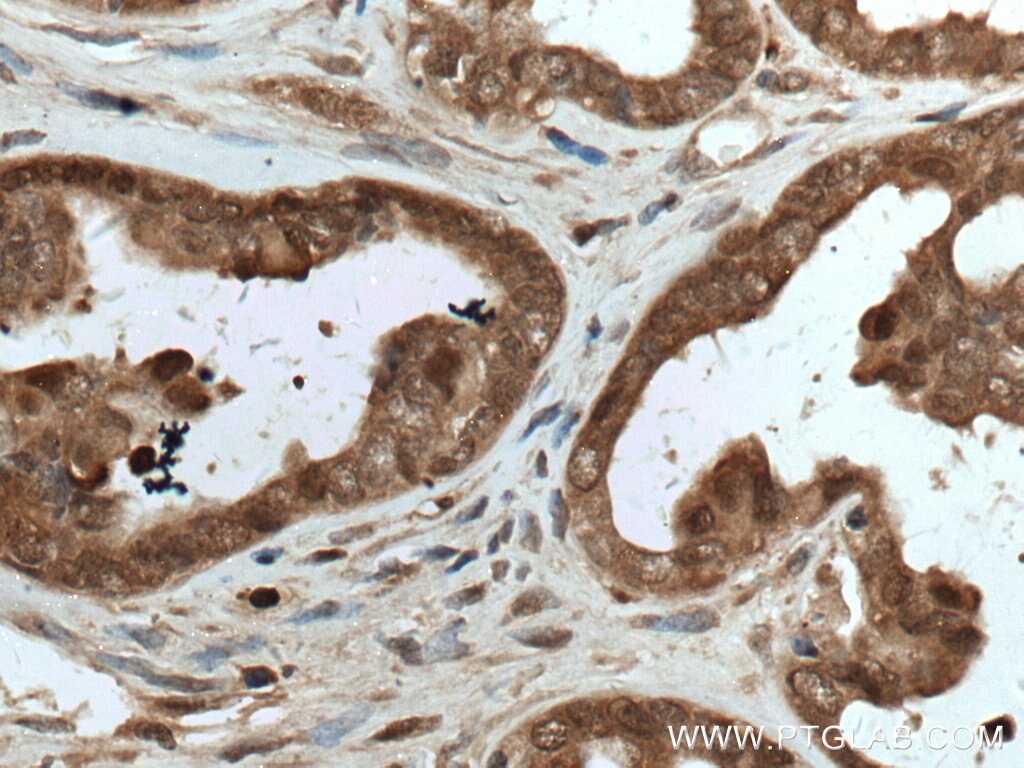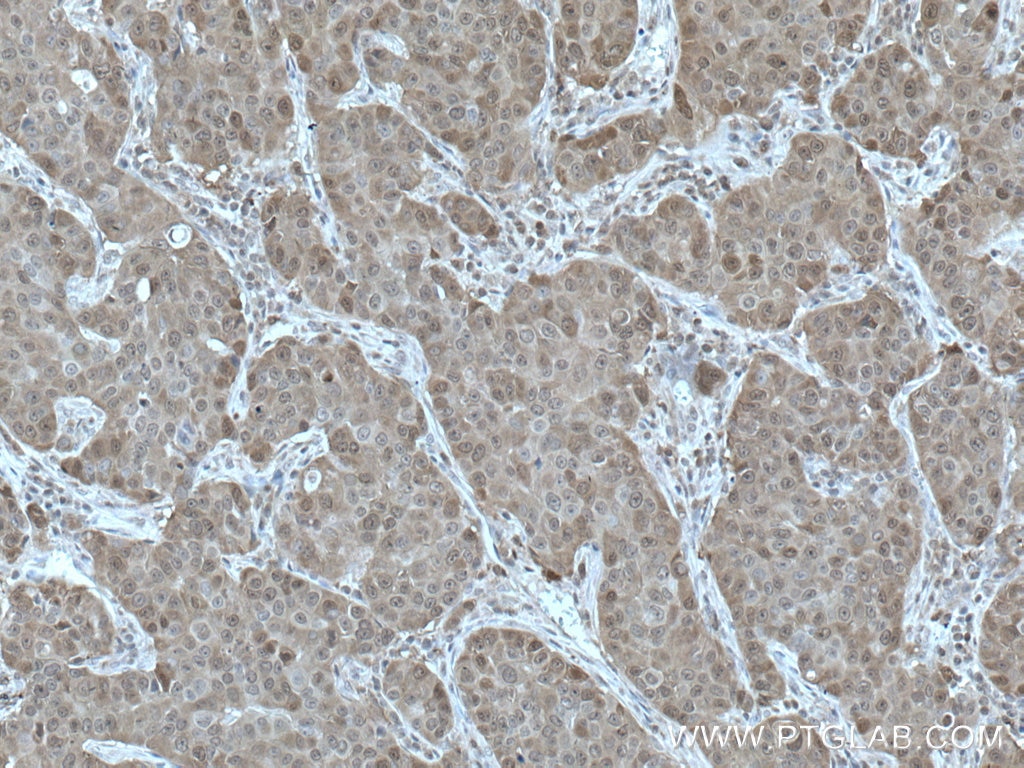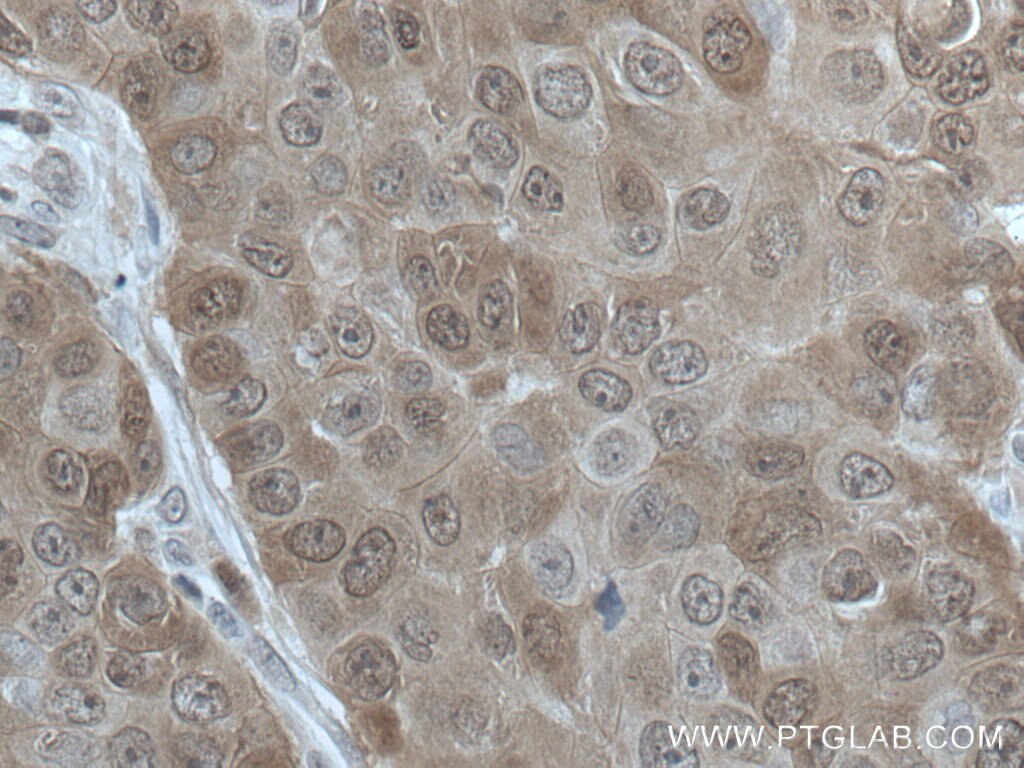- Phare
- Validé par KD/KO
Anticorps Polyclonal de lapin anti-HN1
HN1 Polyclonal Antibody for WB, IP, IHC, ELISA
Hôte / Isotype
Lapin / IgG
Réactivité testée
Humain, rat, souris
Applications
WB, IP, IF, IHC, CoIP, ELISA
Conjugaison
Non conjugué
N° de cat : 14914-1-AP
Synonymes
Galerie de données de validation
Applications testées
| Résultats positifs en WB | cellules HeLa, cellules A431, cellules HepG2, cellules LNCaP, tissu cérébral humain, tissu de côlon de souris, tissu testiculaire de souris, tissu testiculaire humain |
| Résultats positifs en IP | cellules MCF-7 |
| Résultats positifs en IHC | tissu de tumeur ovarienne humain, tissu de cancer du sein humain il est suggéré de démasquer l'antigène avec un tampon de TE buffer pH 9.0; (*) À défaut, 'le démasquage de l'antigène peut être 'effectué avec un tampon citrate pH 6,0. |
Dilution recommandée
| Application | Dilution |
|---|---|
| Western Blot (WB) | WB : 1:500-1:1000 |
| Immunoprécipitation (IP) | IP : 0.5-4.0 ug for 1.0-3.0 mg of total protein lysate |
| Immunohistochimie (IHC) | IHC : 1:50-1:500 |
| It is recommended that this reagent should be titrated in each testing system to obtain optimal results. | |
| Sample-dependent, check data in validation data gallery | |
Applications publiées
| KD/KO | See 3 publications below |
| WB | See 6 publications below |
| IHC | See 3 publications below |
| IF | See 2 publications below |
| CoIP | See 1 publications below |
Informations sur le produit
14914-1-AP cible HN1 dans les applications de WB, IP, IF, IHC, CoIP, ELISA et montre une réactivité avec des échantillons Humain, rat, souris
| Réactivité | Humain, rat, souris |
| Réactivité citée | Humain |
| Hôte / Isotype | Lapin / IgG |
| Clonalité | Polyclonal |
| Type | Anticorps |
| Immunogène | HN1 Protéine recombinante Ag6712 |
| Nom complet | hematological and neurological expressed 1 |
| Masse moléculaire calculée | 11 kDa, 16 kDa, 19 kDa |
| Poids moléculaire observé | 23-30 kDa |
| Numéro d’acquisition GenBank | BC001420 |
| Symbole du gène | HN1 |
| Identification du gène (NCBI) | 51155 |
| Conjugaison | Non conjugué |
| Forme | Liquide |
| Méthode de purification | Purification par affinité contre l'antigène |
| Tampon de stockage | PBS avec azoture de sodium à 0,02 % et glycérol à 50 % pH 7,3 |
| Conditions de stockage | Stocker à -20°C. Stable pendant un an après l'expédition. L'aliquotage n'est pas nécessaire pour le stockage à -20oC Les 20ul contiennent 0,1% de BSA. |
Informations générales
HN1 (hematopoietic- and neurologic-expressed sequence 1) is a highly conserved protein that is expressed in developing and regenerating tissues. Overexpression of HN1 has been reported in various tumors like glioma and breast cancer. Hn1 has also been reported as a marker for human ovarian carcinoma and can distinguish epithelial ovarian carcinoma cells from normal ovarian surface epithelial cells. This collective information suggests that HN1 is involved in processes associated with cell proliferation, repair and/or growth.
Protocole
| Product Specific Protocols | |
|---|---|
| WB protocol for HN1 antibody 14914-1-AP | Download protocol |
| IHC protocol for HN1 antibody 14914-1-AP | Download protocol |
| IP protocol for HN1 antibody 14914-1-AP | Download protocol |
| Standard Protocols | |
|---|---|
| Click here to view our Standard Protocols |
Publications
| Species | Application | Title |
|---|---|---|
Cancer Lett HN1 promotes tumor growth and metastasis of anaplastic thyroid carcinoma by interacting with STMN1.
| ||
Kaohsiung J Med Sci Increased expression of hematological and neurological expressed 1 (HN1) is associated with a poor prognosis of hepatocellular carcinoma and its knockdown inhibits cell growth and migration partly by down-regulation of c-Met.
| ||
Chem Biol Drug Des Matrine exerts an anti-tumor effect via regulating HN1 in triple breast cancer both in vitro and in vivo | ||
Cancer Lett Epigenetic inhibition of CTCF by HN1 promotes dedifferentiation and stemness of anaplastic thyroid cancer | ||
Reprod Sci Hematological and Neurological Expressed 1 Promotes Tumor Progression Through mTOR Signaling in Ovarian Cancer
| ||
Biochem Genet Knocking Down HN1 Blocks Helicobacter pylori-Induced Malignant Phenotypes in Gastric Mucosal Cells and Inhibits Gastric Cancer Cell Proliferation, Cytoskeleton Remodeling, and Migration |
